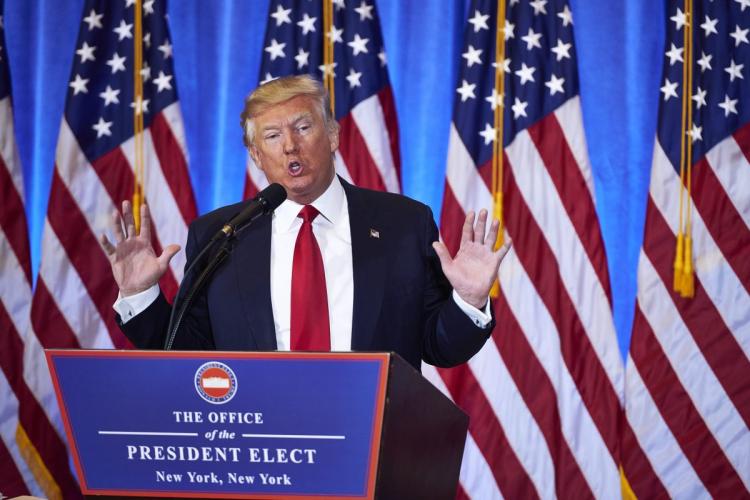Written by Calvin Jackson|
Photos via World Atlas and the NJOBES Journal|

Fake news has recently come up in the media as a recurring topic ever since President Trump made a “fake news” accusation in his first press conference as President-elect. According to The Telegraph, he called out CNN’s Jim Acosta when he said, “You are fake news!” while refusing to take his question. The term fake news can be defined as a type of hoax or deliberate spread of misinformation, be it via the traditional news media or via social media. The intent of publishing or posting this misinformation is for political or financial gain. Another aspect of fake news can be when misinterpretations are made and then the false information is spread, but the person spreading the misinformation is not necessarily aware that what they are spreading is false.
An example of using fake news for the intent to gain politically was America’s first case of fake news, which arose during the 1828 presidential election. Candidate Andrew Jackson falsely claimed that his opponent John Quincy Adams had procured a young American girl to “satisfy” the Tsar of Russia, who was visiting the United States.

A more recent example of financial gain in the fake news world was seen in the middle eastern country of Macedonia but affected the American media and U.S. presidential election. In 2016, an eighteen-year-old Macedonian wrote fake news articles highlighting the negatives of the 2016 U.S. presidential candidate Hillary Clinton. The 18-year-old earned money from the company he published for on a per-click basis, which eventually earned him over $60,000. His articles usually involved topics such as Clinton’s email scandal, the content of the emails, and Clinton’s involvement in the Benghazi tragedy.
Fake news does not just exist in this high form of government. Instances even come up at The Morgan School and in our town’s community. For example, back in 2013, falsified quotes and misinformation in an article on the Fire Department in Clinton were published by a member of the the Morgan Pawprint. Class of 2019 president Caleb Adams-Hull provided a quote on the matter of small instances of fake news in and around our school community and said, “The type of fake news experienced here comes from miscommunication. From that, misinterpretations are made and sometimes people are led to believe things that are not necessarily true.”
Often readers or viewers of fake news do not know that what he or she is interpreting is false information unless they fact-check, which most readers or viewers do not take the time to do. The most basic way to identify fake news is by confirming with multiple sources that information is truthful and fact based. When information is published that may offend or criticize a certain person, group of people, or organization, it does not mean it is fake news. It is the legitimacy of information within the news piece that determines whether or not it is fake news. A way to stop the spreading of fake news in the media is to not repost or retweet information that you are not entirely sure is fact based. USA Today has some other helpful tips to help you to decipher fact from fiction and how to stop the spread of fake news material.
How do we fix the problem of fake news in our country and in the world? Sadly, fixing the problem is not much of a reality. Nobody can control what others say, meaning that it is up to us as individuals to decide what we want to believe. We possess the freedom to access all the information we need to make decisions for ourselves, our families, our communities, and our country. It is the right of the people to identify in the flood of information published what is true from what is false. In the United States, what people say is protected under the first amendment, specifically by the right to free speech. To let the government censor what information is real and what is fake infringes upon not just the rights of journalists, but the rights of U.S. citizens whose privilege to speak freely is justified under the constitution.


